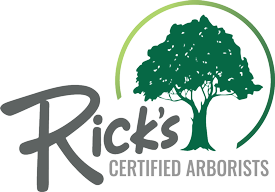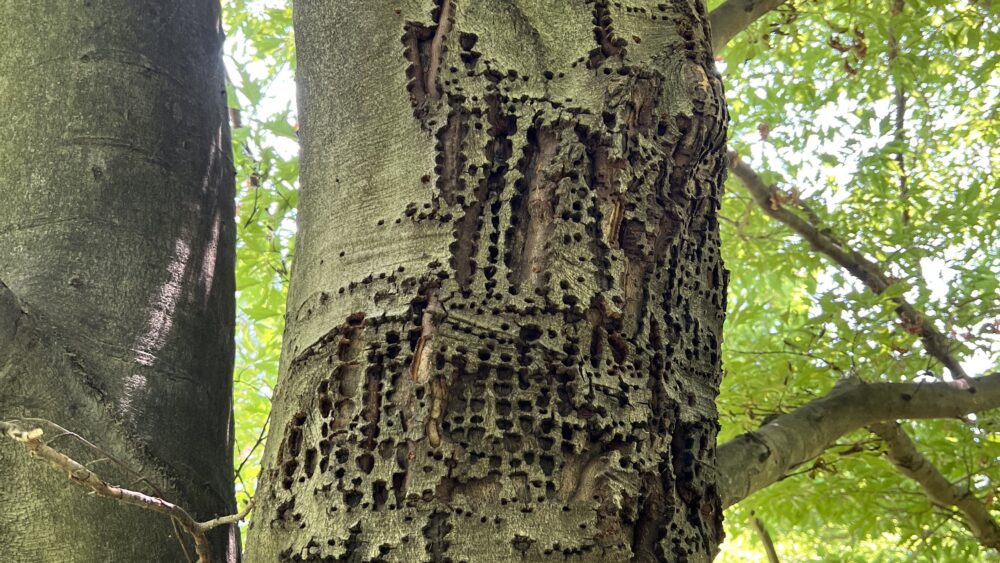Dutch Elm Disease worries many homeowners with these majestic trees on their property. Certified Arborists must manage the problem quickly to give trees a chance to survive. Call Rick’s PHC Certified Arborists at 610-840-2655 to make an appointment for a consultation.
What is Dutch Elm Disease?
The fungus Ophiostoma ulmi causes Dutch Elm Disease. It is a dangerous vascular wilt disease that spreads rapidly.
In years past, the disease decimated Elm tree populations across the United States and worldwide. For this reason, Elms were on the brink of being eliminated in the United States. Treatment protocols and the creation of disease-resistant varieties saved the Elm. However, Dutch Elm Disease is still a problem in Pennsylvania.
Symptoms
When a tree has Dutch Elm Disease, the leaves on a few branches will begin to wilt, turn yellow, and fall before they should. As the disease progresses, more branches will turn yellow. Looking at the sapwood inside the branch, you will see brown streaks.
Homeowners and Certified Arborists should have affected Elm trees lab-tested to confirm the presence of Dutch Elm infection.
The disease spreads when Elm Bark Beetles lay their eggs beneath the bark. These beetles carry fungal spores from tree to tree.
When untreated, Dutch Elm Disease can kill a young tree in a few weeks. For a larger tree, it takes one to two years. For this reason, homeowners and Certified Arborists must manage the disease promptly.
Treatment
Aggressive management is the best way to control Dutch Elm Disease. Unfortunately, many trees with moderate to advanced infections will need cutting down.
Homeowners should immediately remove all dying or dead Elm trees to cut down on the beetles’ breeding sites. Branches with signs of Dutch Elm Disease should come down as soon as possible before the disease has progressed to the main trunk.
Prevention
The best prevention for Dutch Elm Disease is to plant resistant varieties. Chinese and Siberian Elm trees, along with some American Elm hybrids, are resistant.
Fungicide injections can help to prevent tree infections. Certified Arborists should administer this treatment every 1 to 3 years. When Certified Arborists apply this treatment soon after symptoms emerge, they have the best chance of saving the tree.
Beetle control and proper wood sanitation can help slow the disease’s spread.
Are You a Good Candidate for Dutch Elm Disease Treatment?
If you have Elm trees with the beginnings of Dutch Elm Disease infection, you may be able to save them through pruning and trunk injections. Otherwise, these trees will need removal.
Why Choose Rick’s PHC Certified Arborists?
Our Certified Arborists are tree disease experts well-versed in problems occurring in our service area. They have vast expertise in treating trees with many problems that are difficult to manage. We can diagnose your landscape trees and shrubs if they show signs of illness and manage any outbreaks.
Frequently Asked Questions About Dutch Elm Disease
Where did Dutch Elm Disease first emerge?
The disease takes its name from two Dutch scientists who identified it. Scientists believe that the disease comes from Asia. Many Asian Elm species developed resistance to this pathogen.
Which tree species are most prone to Dutch Elm Disease?
The Slippery Elm and American Elm are two of the most vulnerable varieties. Consider planting Chinese Elms or other resistant varieties to replace affected trees.
If infected wood exists on my property, how should I deal with it to contain the spread of Dutch Elm Disease?
You should chip, burn, or bury infected wood. Treat both pruned branches and complete trees in the same manner.
Do root grafts spread the disease?
Yes, root grafts can spread Dutch Elm Disease. If you have any root grafts on your affected trees, remove them before treatment.
Why is Dutch Elm Disease so dangerous?
The pathogen spreads with incredible speed through intertwined root systems and the Elm Bark Beetle. Since there are two disease vectors, the disease spreads rapidly.
Irreversible damage occurs long before homeowners can spot the first outward symptoms. This problem means that trees are already in danger before anyone sees the symptoms.
Call Rick’s PHC Certified Arborists
If you have noticed that your Elm trees are starting to show suspicious disease signs like yellowing and wilting leaves, call Rick’s PHC Certified Arborists at 610-840-2655 for help. Our Certified Arborists will examine your trees and put their resources into solving your tree problem.


Comments are closed.